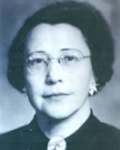|
Zasliai is located at the Troki
[Trakai] region, about 10 km from the city of Kushidar
[Kaisiadorys], half way on the road from Kovno to
Vilna. About 1,000 Jews lived in the town during the year of
the Holocaust.
The Germans were seen in the
town from the early days of the Germany-USSR war. A part of
the Jewish population was trying to escape to the USSR, but
was caught up by the approaching German army and were
compelled to return to Zasliai.
From the moment the Soviets
retreated, the Lithuanian "activists" became the rulers of
the place. The first ones to be arrested were the residents
that were suspected of cooperating with the Soviet
authorities. Jews and non-Jews were arrested. The Jewish
prisoners felt immediately what their status was and what
was awaiting them. While the non-Jewish prisoners were being
investigated, and, if there were no severe accusations
against them – they were released – the Jews were not even
investigated. The fact that they were Jews was sufficient
reason to move them to Kushidar, and none of them returned.
After the "Soviet Followers,"
the turn of the rest of the Jews arrived. Everyday the
"activists" sent the Jews to work. They were employed at
street cleaning or any other work. The work began early in
the morning and ended approximately at 5PM. After returning
to their homes, they were forbidden to leave their
doorsteps. Food supplies were not given to them and they had
to take a risk and beg their non-Jewish neighbors to sell
them some food to feed their families, for full price, or
for the exchange of some items.
They were under severe fear
day and night from "unexpected visitors." Armed Lithuanians
used to break into their homes and rob them and abuse them
as their hearts desired.
On August 17, 1941,
in the middle of the night, all the men and some of the
women were taken and transferred to Kushidar. They were held
there for 10 days and on Auguest 26, 1941 (3 Elul 5701) they
were murdered in a grove near Kushidar, together with the
Jews of Kushidar and vicinity, and were buried right there.
The rest of the Jews of
Zasliai were transferred on September 22, 1941 to Semilishok
[Semeliskes],
and there they were murdered on October 6, 1941 (15 Tishrai
5702) in a grove near the town, together with more Jews from
the towns in the vicinity.
Only three women and two
children managed to escape form the "actions." They found
shelter with some farmers in the vicinity and were
fortunate to gain freedom after long period of unending
hardships and sufferings.
|
|
| |
 |
|
Based on the
testimony of
Raja Schiff
Shlom-Berkman |
|
|
|
In the list of the mass graves
that was published in the book "Mass Slaughtering in
Lithuania," Part B, the mass graves in the vicinity of
Zasliai are marked as follows:
1. The location – Kushidar
Grove, what is called Vasiliev Diches; The time – August 26,
1941; the number of persons murdered – 1911 men, women and
children.
2. The location – Semilishok,
the bottom of the forest, about 200 meters North-East of the
town; the time – October 6, 1941; the number of persons
murdered – 962 men, women and children.
Sources
Testimony of Raja Shiff-Berkman, Jerusalem
(See: Kushidar)
Editor's Note: For more from
Raja Shiff-Berkman, see Shlom Letter below. |